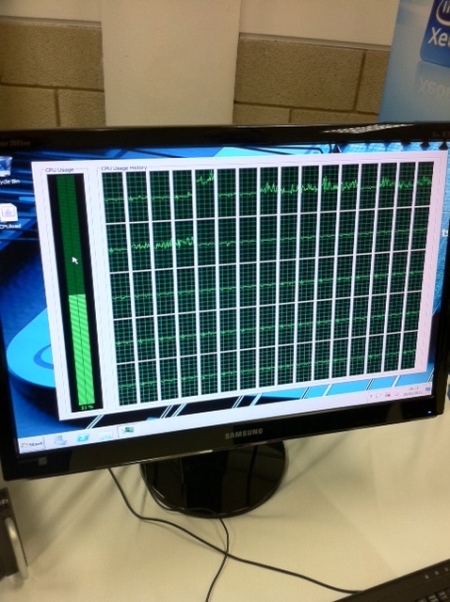Had lunch the other day with a chap called Pat Gelsinger – he’s the CEO of VMware. Pleasant chap – quite understated, not your usual flamboyant leader but a real techy underneath. He spent years at Intel and ran the design groups for most of the major processor developments so he kinda knows his stuff. Unfortunately we only had an hour with him – we were scheduled to have two, but apparently he got stuck in traffic caused by the Queen’s coronation celebration. I did enjoy winding the VMware guys up that it had only been in the diary for 60 years… 🙂
Anyway – there were just a couple of things I thought were worth sharing on their strategy that some or all of you may be interested in:
Cloud:
VMware recently announced vCloud Cloud Service (vCHS, a public-ish cloud service based, no surprises, on VMware). See http://www.theregister.co.uk/2013/03/13/vmware_vcloud_hybrid_cloud_service/ for a bit more detail. They recognise that they can’t compete with Amazon etc, but they think there is a real opportunity here for VMware partners (this will be a channel offering) for the following reasons:
1: it is entirely compatible with on premise workloads that run on VMware. Yes, Amazon etc will import workloads that are currently .vmdk but transferring from VMware on premise to VMware cloud (or partner cloud #cloudsoftcat) will take with it many attributes such as security and networking configurations.
2: Corporate workloads are certified to run on VMware in a way that they aren’t with Amazon. The big example here is that VMware have an agreement with SAP – SAP is fully supported on VMware on or off prem. In fact SAP HANA (big data stuff) on vCHS is the only way to consume HANA as a service/ online for production.
3: VMware had a load of tech that they bought that formed a Platform as a Service package called CloudFoundry. Needless to say this stack runs on VMware…. on or off prem. This means that they will have the only platform where a customer can develop and test an app ‘in the cloud’ and then move it onto their own servers for production (for security, data residency reasons, whatever). Vice versa too. The Cloud Foundry stuff has been spun out (with some other bits) into a company called Pivotal run by VMware’s previous CEO Paul Maritz. (even geekier side-note: you know the term WinTel? Well, that was kinda driven by Paul Maritz and Pat Gelsinger. Paul was Mr Win (ran the Windows platform business at MS for years) and Pat was Mr Tel (Intel chips). Looks like the stack has moved up a little!)
Positioning:
Pat had just come from meeting the CIO at a large media company. The CIO surprised him by saying that this was the first time anyone at VMware had tried to meet him. VMware recognise that they have been selling infrastructure stuff to the head of infrastructure and that the stuff they have now is potentially more strategic. They are really trying to train their sales guys in ‘value selling’ and get them confident in front of CIOs. They are making a real effort to make their literature etc more business centric and less tech-centric. I’m hoping they will be sharing this stuff with the channel as I am sure we can use it as we gradually creep up our customers’ organisations…
VMware are well aware that as servers get bigger, customers will need fewer of them so to keep revenues going in the right direction they have to be able to sell more than just vSphere, hence their three focus areas: Hybrid Cloud, Software Defined Datacentre and End User Computing.
Networking:
Who’s the largest networking vendor by port? If you count virtual ports, it’s VMware – 60 million (virtual) ports worldwide. They consider themselves to be the largest networking vendor no one talks about. They believe there is a real opportunity with virtual networking to increase efficiency and reduce latency – if a database server has to talk to a middleware server and they are on the same host, the traffic never needs to leave the host rather than going on a big loop (VM>virtual nic>physical nic> rack/ blade chassis networking> top of rack switch> core switch etc and back). They recently bought a company called Nicira who apparently have the most advanced distributed control plane – they already had in VCNS the most advanced network insertion. These will combine at VMworld into a single product called NSX. Interestingly they are looking at doing something similar for firewalls, which they expect to be a big channel opportunity…
Needless to say this is bringing them into some ‘interesting’ conversations with Cisco, but they have agreed to work together as they feel the opportunity is better. VMware need hooks into the hardware in the same way they do with server processors etc…
I hope that was interesting – please feel free to share your thoughts in the comments!
